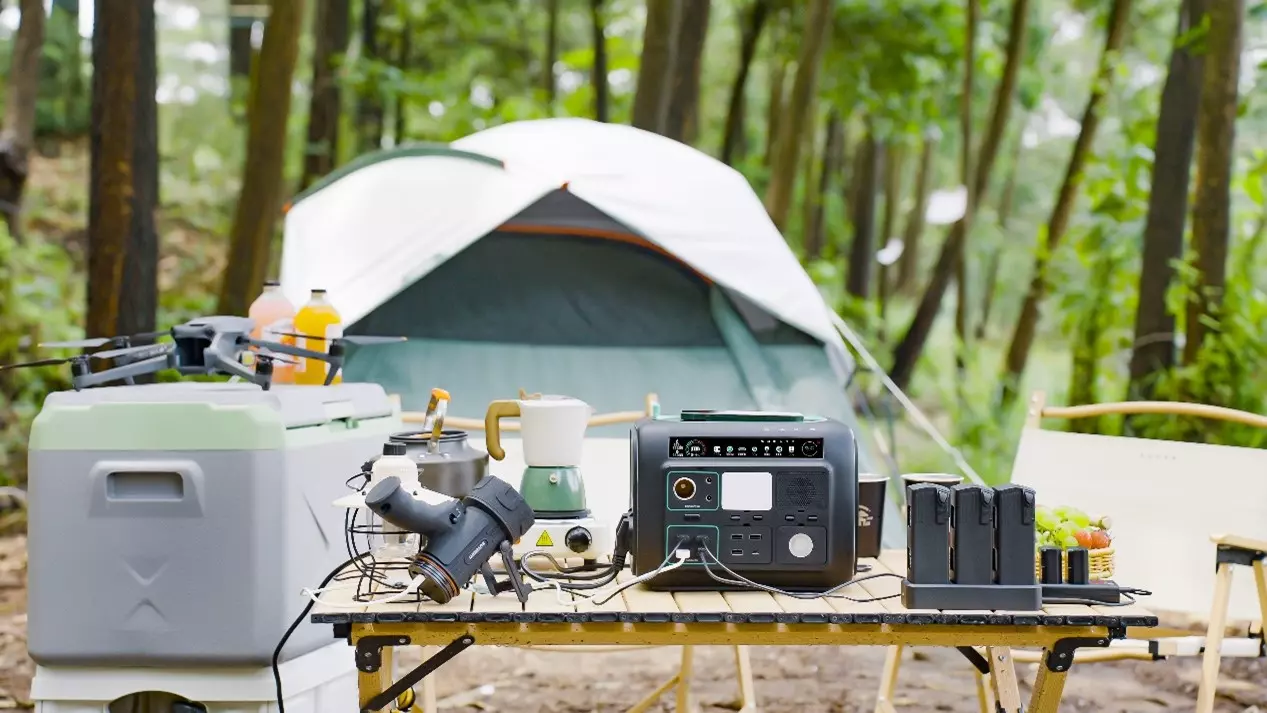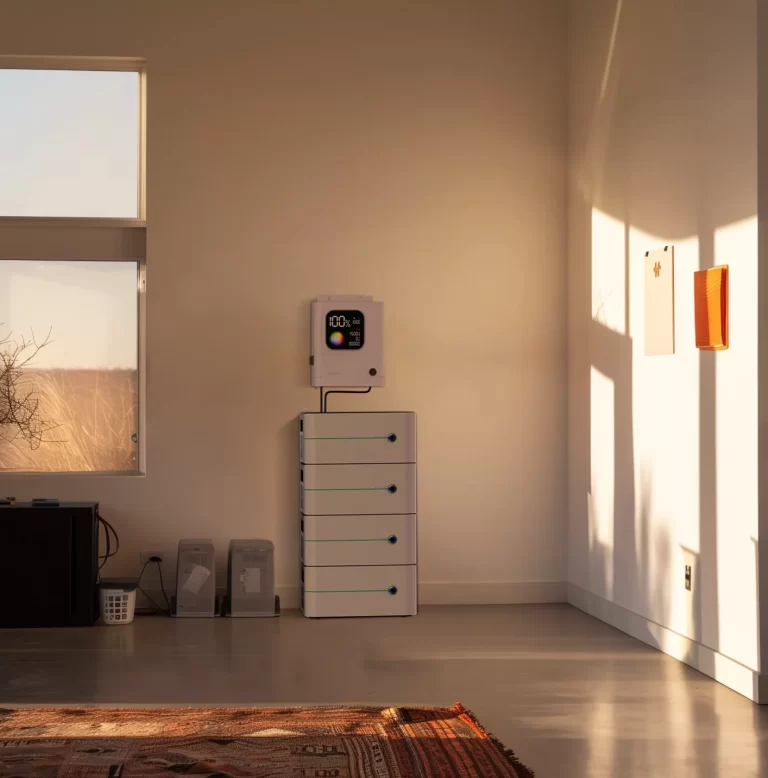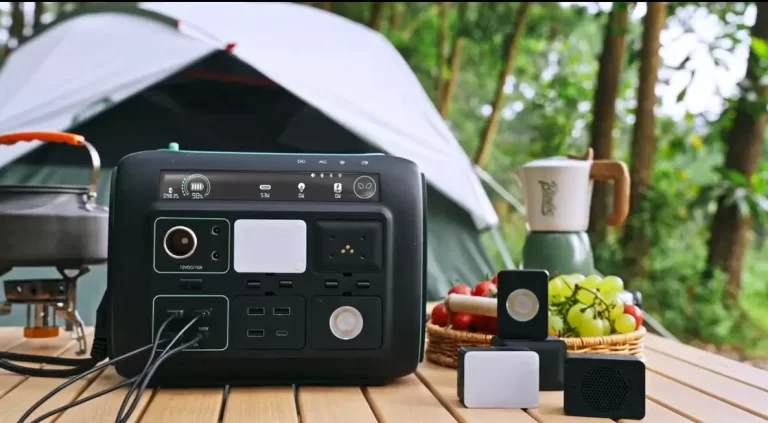It’s vital that you select the correct size solar generator to run a refrigerator during a power outage or camping trip.
Today, refrigerators are our most essential household appliances; they keep our food and beverages fresh for days.
There is a common misconception that refrigerators draw vast amounts of electricity and cannot be adequately powered using solar energy.
This article shows you how to size your solar generator to power a refrigerator, from the smallest unit suitable for a camping trip to the largest household one.
How To Calculate What Size Solar Generator You Need
A solar generator is an all-in-one solution that combines the following:
- Solar panels
- Solar charger
- Battery storage
- Inverter
The size of your solar generator is directly related to your electricity needs and your location’s solar irradiation (power of the sun).
We’ll show you how to size it properly in a four-step process.
Step 1. Determine Your Daily Energy Needs
There are two significant terms when referring to electricity: power and energy.
Power: expressed in Watt (W) or KiloWatt (kW = 1000W)
Energy: KiloWatt.hour (kWh = 1000Wh) in which 1kWh = 1kW x time of use in hours.
Nowadays, it’s easy to estimate your energy needs by listing all the appliances you’d like your solar generator to power.
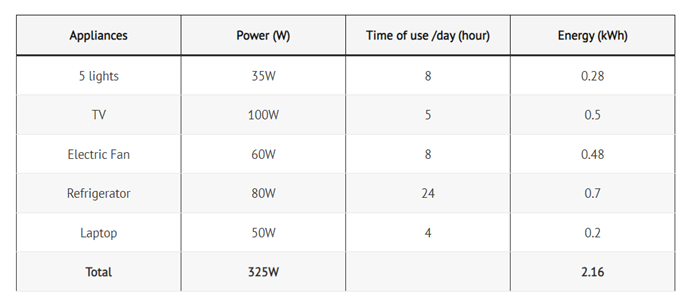
Here, the daily energy consumption is 2.16kWh.
Let’s add 20% to this figure to compensate for system losses. Consequently, the daily production of the solar generator should be 2.6kWh.
Step 2. Calculate The Number Of Solar Panels For Your Solar Generator
Solar panels are essential components of your system — they convert sunlight into electricity used to recharge the built-in battery.
To determine your solar production in kWh/day, enter your location in the global solar atlas. In the result section, look at the “Specific Photovoltaic Power Output (PVOUT)” data in kWh/kWp.
For Los Angeles, California, this value is 4.98kWh/kWp. This means that, on average, 1kW (1000W) of solar panels (kWp, p is for peak) produces 4.98kWh per day.
Now let’s apply the simple formula below:

In our previous example, the daily demand is 2.6kWh.
If you’re located in California, your solar panels’ total power rating should be 522W or 2 solar panels of 270W.
Step 3. Determine The Correct Power Output For Your Solar Generator
If you’d like to connect multiple appliances simultaneously, you should check if the power output of your solar generator is sufficient.
In our example, the total power of the appliances is 325W, so we recommend a solar generator output of 1000W.
This figure is much larger than the total appliance’s power, so your inverter will not be overloaded when the refrigerator starts (refrigerators always draw a higher current when starting).
Step 4. Determine The Storage Capacity Of Your Solar Generator
Your solar generator’s built-in battery is your primary supplier of electricity.
The inverter will exclusively draw current from the battery to ensure a seamless power supply.
The capacity of a battery is rated in Wh or kWh. To make it through a rainy day, we recommend your battery capacity be at least equal to your daily needs.
In our example, a battery capacity of 2.6kWh is sufficient.
What Size Solar Generator Do I Need To Run A Refrigerator?
We’ll apply the four-step process described above to determine the correct size solar generator needed to power a refrigerator.
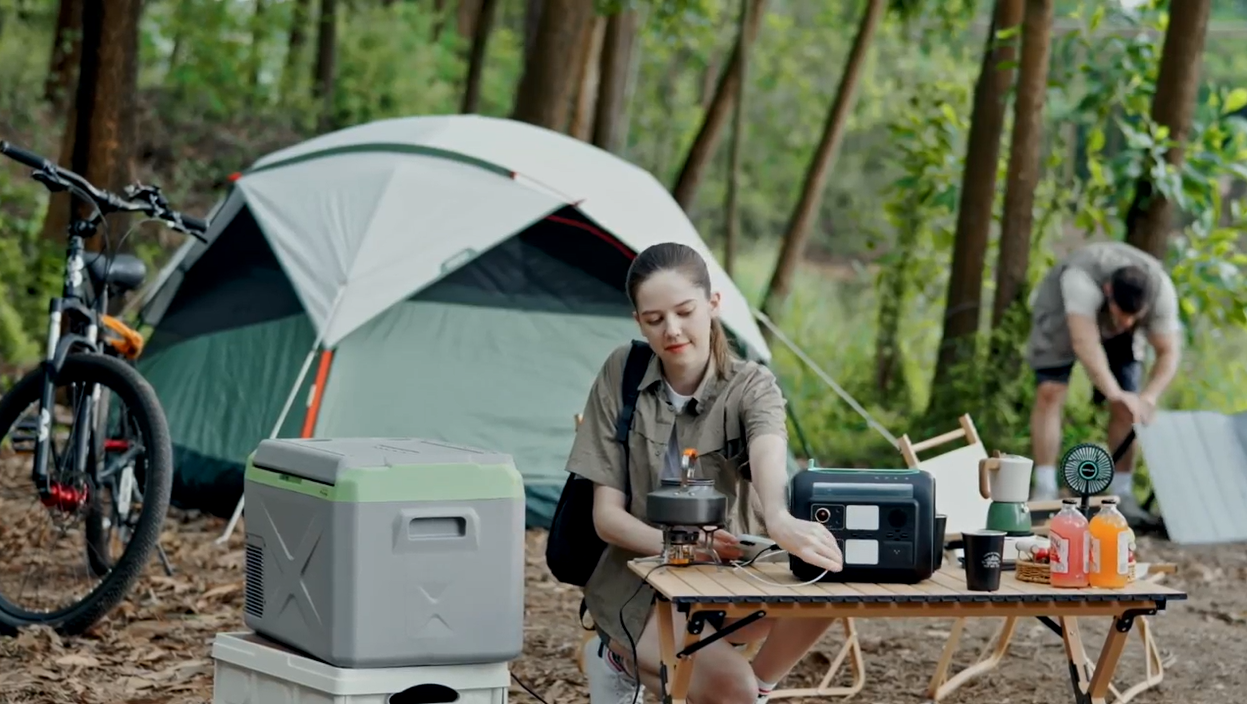
Daily Energy Consumption Of A Refrigerator
It’s time to determine your refrigerator’s daily energy consumption.
Contrary to popular belief, refrigerators are not running 24 hours a day. Instead, their compressor follows an On/Off cycle.
Therefore, you cannot multiply the rated power by 24 hours to get the daily energy consumption like with other appliances.
Instead, you will rely on the data provided by the Energy Star program, a US government-backed label, and energy certification.

Below we compiled the average energy consumption of different refrigerators (including their freezers) in the function of their volume (cubic-foot).
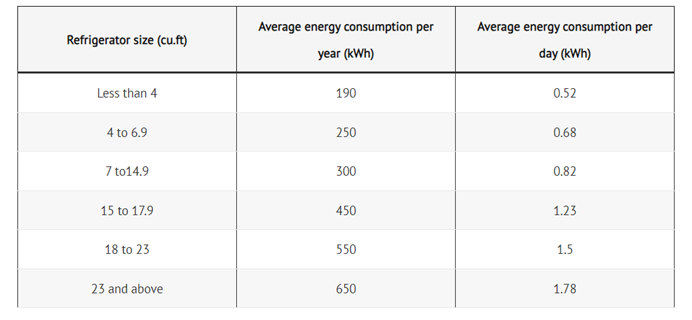
Solar Generator Size Needed For Various Refrigerator Sizes
Let’s calculate the size of a solar generator needed to run a refrigerator, including solar panels, power output, and battery capacity.
We’ll consider the solar potential of California at 4.98kWh/kWp.
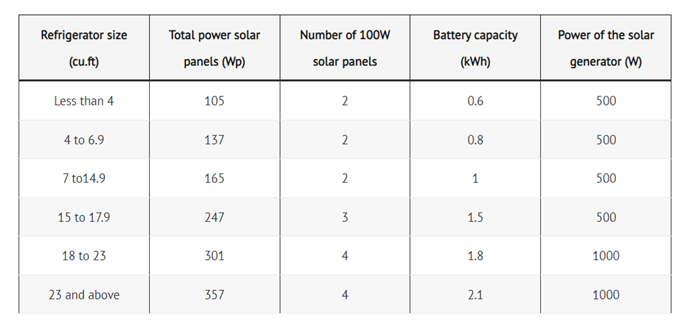
Isn’t it impressive that only 2 solar panels of 100W and less than 1 kWh of battery are enough to run a domestic-size refrigerator with a freezer?
Final Thoughts
Americans have the biggest refrigerators in the world — on average, 17.5cu.ft.
But as big as they are, a solar generator would have no problem powering them.
You’ll need as little as 3 solar panels of 100W and a solar battery of 1.5kWh to run your average-sized refrigerator in California.
If you’re an outdoor enthusiast, this is the perfect time to get a portable solar generator.
Source: climatebiz.com Written by Romain Metaye

